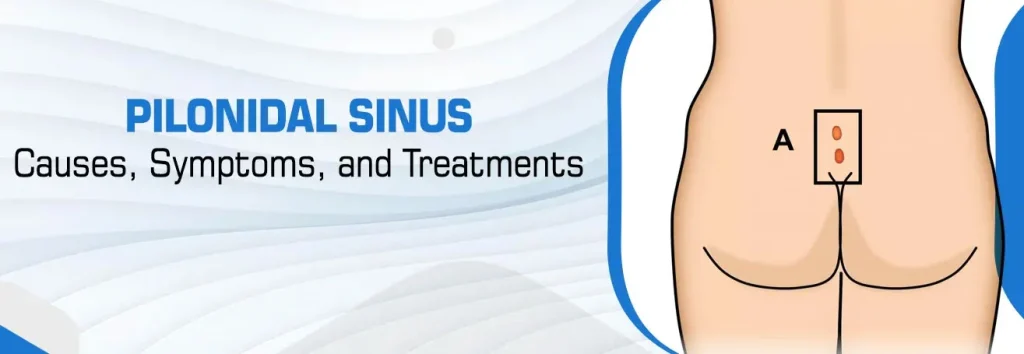Pilonidal Sinus, commonly known as pilonidal disease, is a condition predominantly seen in men, though this does not mean women are immune to it. It poses a risk to both men and women.

What is Pilonidal Sinus?
Pilonidal disease typically arises at the coccyx, where hairs enter under the skin. These subcutaneous hairs are usually from the head and back. Initially, they may not cause problems, but over time, symptoms like pain, discharge, and abscess in the anal area may develop. (1)
Treatment for Pilonidal Disease
Surgical removal of the subcutaneous hairs is a viable treatment for pilonidal disease.
I perform a procedure called Micro Sinusectomy, developed by Op. Dr. Atilla KAYA. This treatment, taking about 15 minutes, allows patients to return home or to work swiftly. (2)
How Does Pilonidal Disease Occur?
Contrary to popular belief, pilonidal disease and ingrown hairs are distinct issues. Pilonidal disease usually occurs in the coccyx area when hair or fur enters under the skin, accumulates there, and leads to inflammation, potentially forming cysts or abscesses.
Ingrown hairs, however, occur when hairs or fur cannot surface and grow under the skin, usually resulting in a red, swollen, and tender area on the skin.
Symptoms of Pilonidal Disease
- Pain and Sensitivity: Common in the coccyx area, the pain can worsen over time.
- Redness and Swelling: The coccyx area may become red and swollen.
- Inflammation and Pus: If infected, inflammation and pus may develop, accompanied by fever, fatigue, and chills.
- Ulcer or Abscess Formation: Advanced cases may lead to ulcers or abscesses filled with swelling and pus.
- Skin Hole or Sinus: A small skin hole or sinus may open in the area of the pilonidal sinus.
How is Pilonidal Disease Cured?
It’s commonly asked if it resolves on its own. Unfortunately, it doesn’t and delays in treatment can worsen the condition. Surgical removal of the hairs and surrounding membrane is the only solution.
How is Pilonidal Disease Surgery Performed?
Surgery is the effective solution, with various techniques available. I recommend the Micro Sinusectomy technique.
- Simple Infected Cyst Surgery: Involves removing the pilonidal sinus and cleaning the inflammation inside.
- Marsupialization Surgery: The skin is cut, and a pouch is formed underneath for healing.
- Limberg Flap Surgery: Removes the pilonidal sinus and closes the area with skin taken from adjacent healthy tissue.
- Pilonidal Sinus Patch Surgery: Involves cutting the skin and closing it with a patch or covering tissue.
What is Micro Sinusectomy, and its Advantages?
Micro Sinusectomy is a surgical method for treating Pilonidal Sinus. It involves the removal of the sinus to speed up the healing process.
No operating room or general anesthesia is required. It can be done in a clinic setting in about 15 minutes. With maximum incision lengths of 2 cm, there’s minimal disruption to work life. Hospitalization is also not required.
Its main advantage is its economic feasibility. Contact us through our contact page for surgery pricing.
REFERENCE
- De Parades, V., Bouchard, D., Janier, M., & Berger, A. (2013). Pilonidal sinus disease. Journal of visceral surgery, 150(4), 237-247.
- Allen‐Mersh, T. G. (1990). Pilonidal sinus: finding the right track for treatment. British Journal of Surgery, 77(2), 123-132.